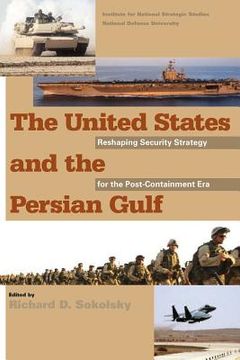The United States and the Persian Gulf: Reshaping Security Strategy for the Post-Containment Era (en Inglés)
Reseña del libro "The United States and the Persian Gulf: Reshaping Security Strategy for the Post-Containment Era (en Inglés)"
Significant changes lie ahead for U.S. security strategy in the Persian Gulf after almost a decade of stasis. In the decade between the Gulf War and the terrorist attacks on the World Trade Center and the Pentagon, the strategy of dual containment of Iraq and Iran was a key driver of American military planning and force posture for the region. During these years, the overriding U.S. concern was preserving access to Gulf oil at reasonable prices; both Iran and Iraq possessed only a limited ability to project power and influence beyond their borders; the Persian Gulf states acquiesced to a significant U.S. military presence on their soil despite the domestic costs; and the United States was reasonably successful, at least until the second Palestinian intifada in September 2000, in insulating its relationships with key Gulf states from the Israeli-Palestinian conflict. At the end of the Clinton administration, it seemed safe to assume that the regional security environment would continue to evolve more or less on its present trajectory and that the challenge confronting the United States was how to manage U.S. forward presence for the long haul under increasingly stressful conditions. This premise is no longer valid. The strategy of dual containment, which is just barely alive, will expire in one way or another in all likelihood because the United States decides to end Saddam Husayn's rule. American success in engineering a regime change in Baghdad will require a substantial increase in U.S. forward deployed forces followed by a multinational occupation of Iraq that is likely to include a significant U.S. military component. At the same time, even if regime change does not occur in Iraq, other factors are likely to put pressure on the United States over the next decade to alter the shape of its military posture toward the region. The purpose of this study is to evaluate the implications of these political, strategic, security, and military factors for U.S. military presence and force posture, defense and security relationships, and force planning for the region. Specifically, the chapters that follow seek to frame the issues, options, and tradeoffs facing U.S. defense planners by focusing on the following questions: To what extent does the emerging security environment-that is, the changing nature of U.S. interests and threats to those interests- require changes in the size and composition of forward deployed forces, peacetime engagement activities, military operations, and force protection? Does the United States need to reconfigure its security and military relationships with regional friends and allies to take account of their changing security perceptions and policies? Are there trends in the strategic environment that are likely to generate new demands and requirements for the Armed Forces? How can the United States reconcile the call in the Quadrennial Defense Review 2001 for greater flexibility in the global allocation of U.S. defense capabilities with the harsh reality that, for the foreseeable future, forward defense of the Persian Gulf will remain dependent on substantial reinforcements from the United States? The main conclusion of this study is that, with or without regime change in Iraq, the United States will need to make significant adjustments in its military posture toward the region.

